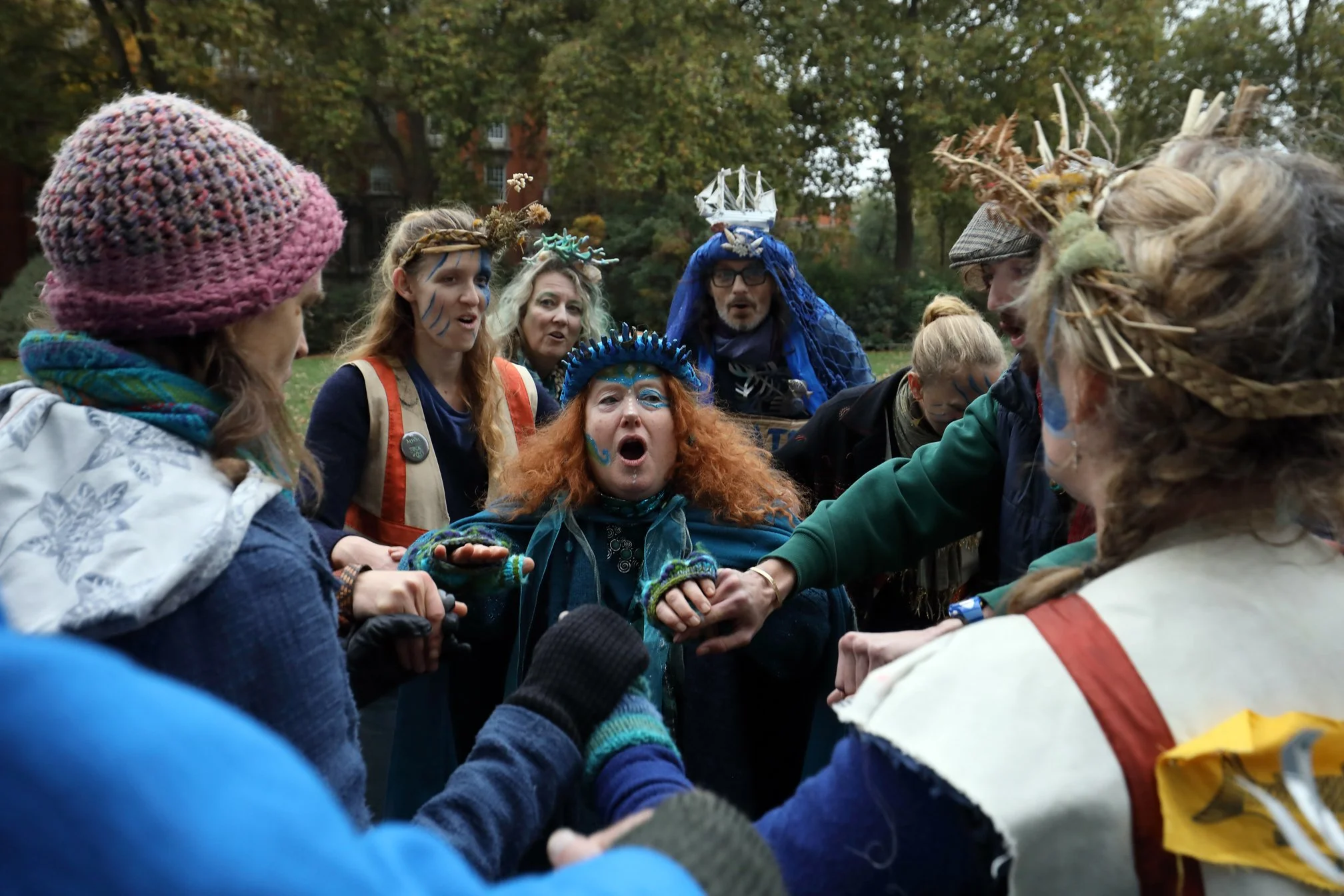Weaving the sacred into the March for Clean Water
High Tide closing ceremony. Photo by Max Reeves
Sacred Earth Activism supported the March for Clean Water in London on 3 November with a series of ceremonial events to honour our sacred relationship with this vital element.
The aim of the March, which was attended by around 15,000 people, was to demand that the UK government take action in three key areas to keep the country’s rivers and seas clean: 1) Regulatory reform, 2) Enforcement of the law and 3) Stopping pollution for profit.
To support the action, SEA’s Sol and Vey from the Save the Wye campaign held a series of ceremonies. They took place from low tide to high tide, before, during and to conclude the March. The intention was to weave the sacred into the event and ask the nature beings and ancestors for help and support in achieving its goals.
But creating ceremonial space was also about reminding participants of the importance of not maintaining a purely human-centred focus. The idea here is that we inhabit a living, interconnected body that has many ways of knowing, from our heads to our hearts, guts, senses and intuition.
Sol and Vey said in a joint statement: “We’d like to thank River Action for initiating and bringing together so many on the March, and including our input and call for the sacred embodiment of Water through ceremony. We felt a more sacred, empowered sense of kinship with the Water was created as a result, which led to further engagement with the rally and its demands.”
They also thanked Kim Kaos and the participation of his Wye River Goddess, Georgia Wisbey for creating the wreath, Kitty, Crow, Jo Mishan and the Mayday Morris Dancers from Dartmoor for their ceremonial input. Other participants, both human and more-than-human, were thanked for attending too.
Sol and Vey continued: “By having a consistent ceremonial presence, we found people engaged with us when they came into contact. They felt able to make offerings, whether through their contributions of water and expressions of grief, humility or gratitude, or through spontaneous prayers, blessings, songs, poems, dance etc.”
Moreover, having an “embodied, ceremonial procession” made the event feel like more than just a regular march as it reflected our “kinship and connection with Water”, they added.
Here are some of the highlights of the day below:

















